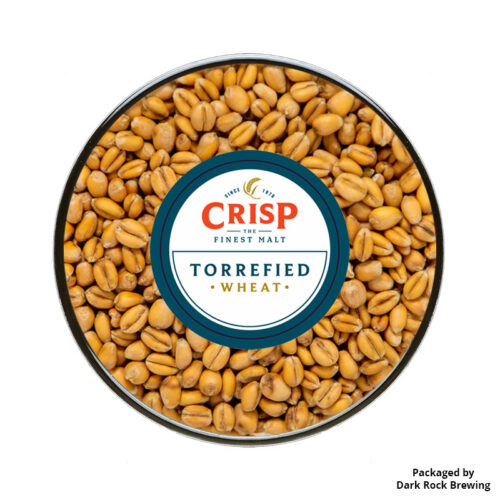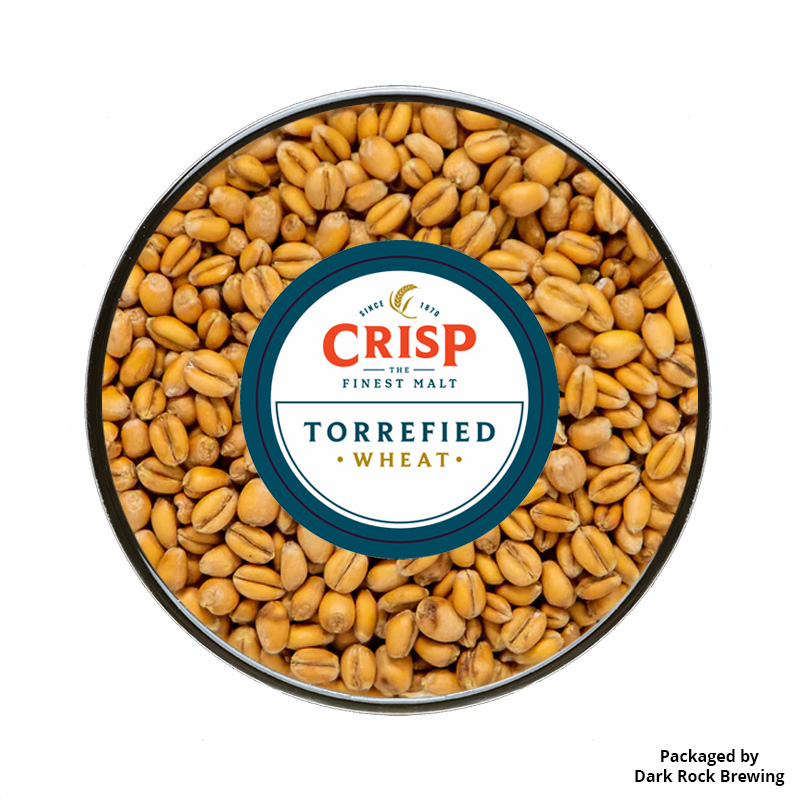Crisp | Crushed Torrefied Wheat
£0.95 – £10.00
Get it shipped -
Order within -
Torrified wheat is a pre-gelatinized unmalted brewers wheat. It Increases body and head retention, as well as adding a toasted flavor.
Description
Crisp Torrefied Wheat
Torrified wheat is a pre-gelatinized unmalted brewers wheat that can be used as a cereal grain/adjunct in the mash. It can be used to replace malted wheat to provide a different taste. Torrified wheat Increases body and head retention, as well as adding a very slight toasted flavour. We recommend using a small quantity of Rice Hulls with this grain to avoid a stuck mash. Torrified Wheat is used extensively to promote head retention in Bitters. Its use is recommended in all recipes where a good head is required.
body and head retention, as well as adding a very slight toasted flavour. We recommend using a small quantity of Rice Hulls with this grain to avoid a stuck mash. Torrified Wheat is used extensively to promote head retention in Bitters. Its use is recommended in all recipes where a good head is required.
Main Styles:
- Bitter
- IPA
- WitBier
- German Wheat Beer
Technical information:
Wheat is useful in brewing as it provides a high protein content to contribute to foam stability. Protein is known to aid foam qualities and whilst malted barley does contain some protein, wheat contains a larger percentage. Wheat on its own needs to be gelatinised before fermentable sugars can be extracted. Torrified wheat has already undergone pre-gelatinisation. This is why it is so convenient to add a small percentage of torrified wheat to the grist of many ber styles in order to increase the froth forming compounds.
The term “torrified” refers to the process the wheat is treated with. Wheat kernels are subjected to a high-temperature heat treatment that breaks down the cellular structure of the grain. Unmalted wheat is heated until the grains ‘pop’ in a similar manner to popped corn. The popping exposes the centre of the grain and can, therefore, be used in the mash tun without any other form of pre-treatment. Wheat that has not been torrified has starch that needs to be gelatinised before the brewer can extract fermentable sugars from it. The way to gelatinise the starch in wheat is to heat it up to over 85°C before mashing. The torrification process pre-gelatinises the starches in the wheat so that they are easily broken down at mash temperatures.
To promote head retention and increase the stability and body of a beer a good starting point is to use torrified wheat to make up 5 – 10% of the grist. Around 8% is a good level to achieve good lacing on the glass when drinking a beer. Torrified wheat can be used in larger quantities, most maltsters have a maximum figure of around 40% of the grist to make Witbiers and German wheat beers.
There are no enzymes in torrified wheat, brewers need to rely on the diastatic power of pale or lager malts to convert the starches in a mash, which is why grain bills are limited to 40% Torrified wheat is, therefore, only suitable for mashing and needs to be mashed with other malts that have enzymes to convert the starches into fermentable sugars.
3.5-4.5 EBC
1.9-2.2 L
What are the scales used?
“Degrees Lovibond” or “°L” scale is a measure of the colour of beer. The determination of the degrees Lovibond takes place by comparing the colour of the substance to a series of amber to brown glass slides. The scale was devised by Joseph Williams Lovibond. The Standard Reference Method (SRM) and European Brewery Convention (EBC) methods have largely replaced it, with the SRM giving results approximately equal to the °L.
The Standard Reference Method or SRM is a system modern brewers use to measure the colour intensity of a beer or wort. The EBC convention also measures beer and wort colour, as well as quantifying turbidity (also known as haze) in beer. EBC (European Brewing Convention) is used to indicate colour in malts (and beers). The lower the EBC is, the lighter is the malt (thus kilned for a shorter time). EBC and SRM/°L scales and conversions are available online and usually provide colour swatches to indicate the colour depth that you are likely to achieve from specific malts.
Most craft brewers measure the colour of the grain using EBC (European Brewing Convention). The higher the EBC the darker the malt. Other countries may prefer Lovibond (L) or the Standard Reference Method (SRM). There are currently two colour scales in common use: SRM in the US, and EBC in Europe. The SRM (Standard Research Method) scale is based on an older degrees Lovibond scale and for all practical purposes, SRM and degree Lovibond are identical. So to convert SRM to EBC simply multiply by 2. e.g. 4 SRM = 8 EBC. The formula for converting Lovibond to EBC is EBC=(2*Lovibond)-1.2
Why Use Dark Rock Malts and Hops?
The Dark Rock Brewing team are passionate about producing the best quality beers. Their mission is to help you to “Master your Craft” and brew the best craft beers possible. There is no reason why home-produced ales cannot be just as good as commercial equivalents.
The key to success is having a wide selection of the best quality and freshest ingredients possible. Dark Rock ingredients are not just great value, they are of the highest quality and always supplied fresh. The team strive to constantly innovate and experiment with new styles and products.
Dark Rock also markets top quality all grain and part grain kits which receive fabulous reviews. They are experienced commercial brewers and supply craft micro-breweries and nano-breweries with equipment and ingredients. They also provide training and business development consultancy to scale-up breweries. This experience is channelled into equipping the home craft brewer with the “tools to compete”. Use Dark Rock products and you can’t go wrong.
Additional information
| Weight | N/A |
|---|---|
| Manufacturer |








Reviews
There are no reviews yet. Be the first one to write one.